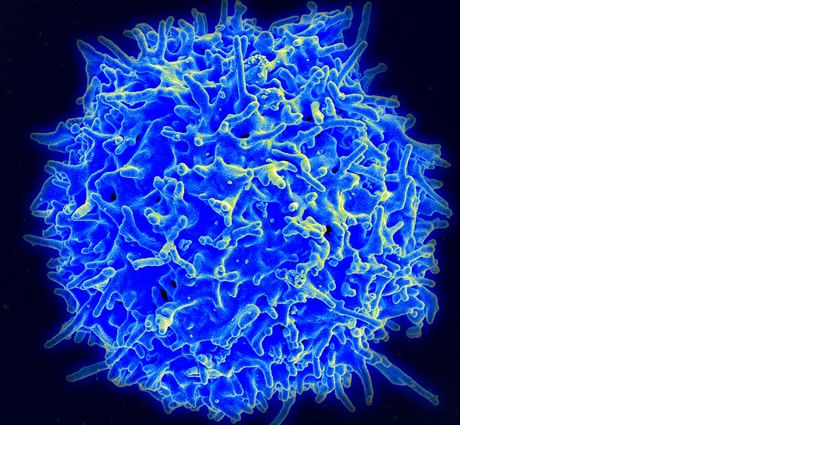Curare malattie autoimmuni senza intaccare il sistema immunitario / Treat autoimmune diseases without affecting the immune system.
Curare malattie autoimmuni senza intaccare il sistema immunitario / Treat autoimmune diseases without affecting the immune system.
Segnalato dal Dott. Giuseppe Cotellessa / Reported by Dr. Joseph Cotellessa
Sperimentata con successo nei topi una nuova terapia che
rimuove solo gli anticorpi responsabili della patologia, una malattia
degenerativa della pelle a carattere autoimmunitario chiamata pemfigo
volgare, lasciando intatto il resto del sistema immunitario. Il
risultato è stato ottenuto ingegnerizzando i linfociti T in modo che
distruggessero i linfociti B all'origine della patologia.
Rimuovere l'insieme delle cellule che producono
gli anticorpi all'origine di una patologia autoimmune, senza intaccare
il resto del sistema immunitario: è questo il risultato descritto sulle pagine della rivista “Science” da
un gruppo di ricercatori della Penn State University. Ottenuto per ora
solo sui topi, rappresenta un importante passo avanti nella terapia
delle malattie autoimmuni e già si progettano nuove sperimentazioni su
altri animali e in prospettiva anche sugli esseri umani.La malattia in questione, cronica e in molti casi letale, è il pemfigo volgare, in cui le cellule del sistema immunitario attaccano una proteina denominata desmogleina-3 (Dsg3) responsabile dell'adesione tra le cellule cutanee.
La mancanza di questa adesione si manifesta con vescicole, erosioni e ulcerazioni che portano a una progressiva degenerazione della pelle. Per questa come per altre malattie autoimmuni, le terapie prevedono la soppressione di gran parte del sistema immunitario, con il grave inconveniente di lasciare i pazienti esposti a tumori e infezioni opportunistiche potenzialmente fatali.
“L'idea iniziale fu che avremmo potuto adattare questa tecnologia per eliminare in modo specifico le cellule che producono anticorpi e causano patologie autoimmunitarie”, ha spiegato Michael Milone, coautore dello studio. “Si tratta di una strategia efficace e anche sicura, perché consente di risparmiare le cellule sane che ci proteggono dalle infezioni”.
Gli autori hanno dimostrato che la nuova tecnica può curare la malattia nei topi, che possono sviluppare pemfigo volgare con effetti letali, senza apparenti effetti sul tessuto sano. Nella sperimentazione, le cellule T ingegnerizzate hanno infatti distrutto i linfociti T che aggrediscono la desmogleina, prevenendo la formazione di vescicole e altre manifestazioni di autoimmunità. E già si pensa di estendere la sperimentazione su altri animali.
“Se potessimo usare questa tecnologia per curare il pemfigo in modo sicuro nei cani, sarebbe un grande progresso per la medicina veterinaria, e potrebbe aprirsi la strada alla sperimentazione sugli esseri umani", ha aggiunto Milone.
ENGLISH
Successfully tested in mice a new therapy that removes only the antibodies responsible of the disease, a degenerative disease of the autoimmune in nature called pemphigus vulgaris skin, leaving intact the rest of the immune system. The result was obtained by engineering the T lymphocytes so that destroy B lymphocytes cause the disease.
Remove the set of cells that produce the antibodies responsible for an autoimmune disease, without affecting the rest of the immune system: this is the result described in the magazine "Science" by a group of researchers at Penn State University. Obtained so far only in mice, it is an important step forward in the treatment of autoimmune diseases and already designing new experiments on other animals and even humans in perspective.
The disease in question, chronic and in many cases lethal, is pemphigus vulgaris, in which cells of the immune system attack a protein called desmoglein-3 (Dsg3) responsible for adhesion between the skin cells.
The lack of this adhesion occurs with blisters, erosions and ulcers that lead to a progressive degeneration of the skin. For this as for other autoimmune diseases, therapies, request the deletion of a large part of the immune system, with the serious disadvantage of leaving patients exposed to potentially fatal opportunistic infections and tumors.
The new therapeutic strategy is based on an idea emerged in the eighties to fight tumors producing an engineered version of the T lymphocytes, a major immune cell populations. Because of enormous technical difficulties, the method has not had subsequent developments for many years, until in 2011 it was thought to apply it to attack and destroy another type of immune cells, B lymphocytes, which can trigger autoimmune processes.
"The initial idea was that we could adapt this technology to eliminate specifically the cells that produce antibodies and cause autoimmune diseases," explained Michael Milone, co-author of the study. "It is an effective strategy that is safe, because it saves healthy cells that protect us from infections."
The authors have shown that the new technique can cure the disease in mice, which can develop pemphigus vulgaris with lethal effects, no apparent effects on healthy tissue. In testing, the engineered T cells have indeed destroyed the T-cells that attack the desmoglein, preventing the formation of vesicles and other manifestations of autoimmunity. And already we are thinking of extending the testing on other animals.
"If we could use this technology to treat pemphigus safely in dogs, it would be a great step forward for veterinary medicine, and may open the way for experimentation on human beings," said Milone.
Da:
http://www.lescienze.it/news/2016/07/01/news/sistema_immunitario_riapara_se_stesso-3145534/




Commenti
Posta un commento